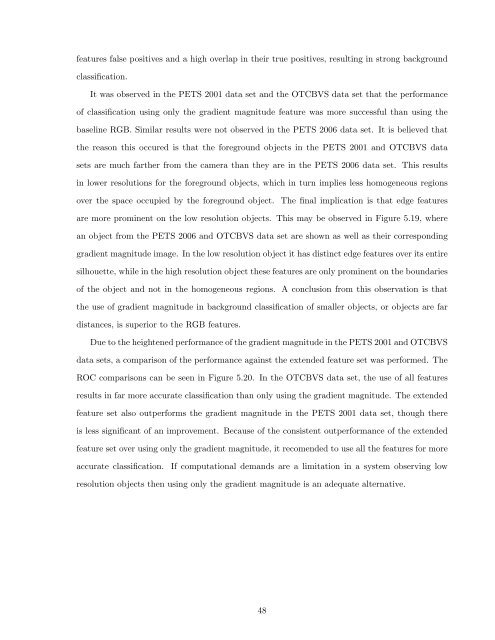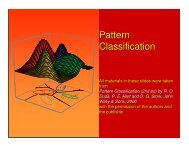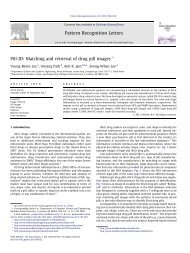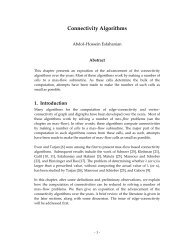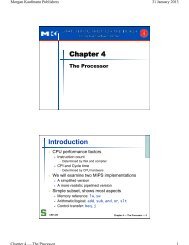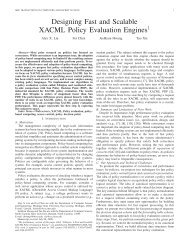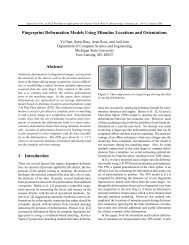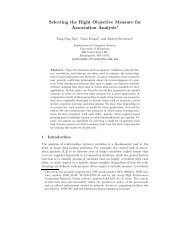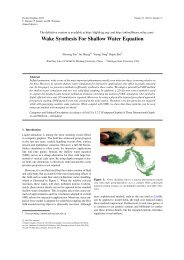Background Subtraction Using Ensembles of Classifiers with an ...
Background Subtraction Using Ensembles of Classifiers with an ...
Background Subtraction Using Ensembles of Classifiers with an ...
You also want an ePaper? Increase the reach of your titles
YUMPU automatically turns print PDFs into web optimized ePapers that Google loves.
features false positives <strong>an</strong>d a high overlap in their true positives, resulting in strong backgroundclassification.It was observed in the PETS 2001 data set <strong>an</strong>d the OTCBVS data set that the perform<strong>an</strong>ce<strong>of</strong> classification using only the gradient magnitude feature was more successful th<strong>an</strong> using thebaseline RGB. Similar results were not observed in the PETS 2006 data set. It is believed thatthe reason this occured is that the foreground objects in the PETS 2001 <strong>an</strong>d OTCBVS datasets are much farther from the camera th<strong>an</strong> they are in the PETS 2006 data set. This resultsin lower resolutions for the foreground objects, which in turn implies less homogeneous regionsover the space occupied by the foreground object. The final implication is that edge featuresare more prominent on the low resolution objects. This may be observed in Figure 5.19, where<strong>an</strong> object from the PETS 2006 <strong>an</strong>d OTCBVS data set are shown as well as their correspondinggradient magnitude image. In the low resolution object it has distinct edge features over its entiresilhouette, while in the high resolution object these features are only prominent on the boundaries<strong>of</strong> the object <strong>an</strong>d not in the homogeneous regions. A conclusion from this observation is thatthe use <strong>of</strong> gradient magnitude in background classification <strong>of</strong> smaller objects, or objects are fardist<strong>an</strong>ces, is superior to the RGB features.Due to the heightened perform<strong>an</strong>ce <strong>of</strong> the gradient magnitude in the PETS 2001 <strong>an</strong>d OTCBVSdata sets, a comparison <strong>of</strong> the perform<strong>an</strong>ce against the extended feature set was performed. TheROC comparisons c<strong>an</strong> be seen in Figure 5.20. In the OTCBVS data set, the use <strong>of</strong> all featuresresults in far more accurate classification th<strong>an</strong> only using the gradient magnitude. The extendedfeature set also outperforms the gradient magnitude in the PETS 2001 data set, though thereis less signific<strong>an</strong>t <strong>of</strong> <strong>an</strong> improvement. Because <strong>of</strong> the consistent outperform<strong>an</strong>ce <strong>of</strong> the extendedfeature set over using only the gradient magnitude, it recomended to use all the features for moreaccurate classification.If computational dem<strong>an</strong>ds are a limitation in a system observing lowresolution objects then using only the gradient magnitude is <strong>an</strong> adequate alternative.48


